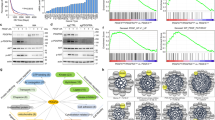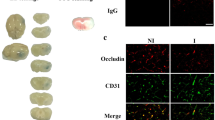Abstract
Baserga1 has summarised evidence that there are two growth states in which cells have a diploid content of DNA; G1—the interval between mitosis and S phase in exponentially growing cultures—and G0, a quiescent state entered only when conditions for growth are suboptimal. G0 can be distinguished from G1 by temporal measurements; for BALB/c 3T3 cells, the lag time between G0 and S phase is never shorter than 12 h (ref. 2), whereas in exponentially growing cells the mean lag time between mitosis and S (G1 by definition) lasts 5–6 h (ref. 3). G0 can also be distinguished from G1 by some biochemical parameters including G0- and G1-specific intracellular proteins4,5. SV40- or polyoma virus-transformed cells cannot enter G0 to become quiescent6–9. Serum induces the growth of BALB/c 3T3 cells in tissue culture. It sustains the growth of exponentially replicating populations, and causes density-inhibited cells to leave G0 and replicate10–12. Serum contains several sets of hormonal growth factors which have recently been defined2,13,14. One of these hormones, the platelet-derived growth factor (PDGF), is released into serum during the clotting process; PDGF is absent in platelet-poor plasma, the liquid portion of unclotted blood15–19. It promotes the growth of G0-arrested cells2,16 by stimulating cells to become ‘competent’ to enter the S phase2; plasma allows these competent cells to progress through G0/G1, synthesise DNA2,20 and divide13. We now show that PDGF has a second function. It prevents replicating cells from entering G0.
This is a preview of subscription content, access via your institution
Access options
Subscribe to this journal
Receive 51 print issues and online access
$199.00 per year
only $3.90 per issue
Buy this article
- Purchase on SpringerLink
- Instant access to full article PDF
Prices may be subject to local taxes which are calculated during checkout
Similar content being viewed by others
References
Augenlicht, L. & Baserga, R. Expl Cell Res. 89, 255–262 (1974).
Pledger, W. J., Stiles, C. D., Antoniades, H. N. & Scher, C. D. Proc. natn. Acad. Sci. U.S.A. 74, 4481–4485 (1977).
Yen, A. & Pardee, A. B. Expl Cell Res. 116, 103–113 (1978).
Farmer, S. R., Ben-Ze'ev, A., Benecke, B. & Penman, S. Cell 15, 627–637 (1978).
Riddle, V. G. H., Dubrow, R. & Pardee, A. B. Proc. natn. Acad. Sci. U.S.A. 76, 1298–1302 (1979).
Pardee, A. B. Proc. natn. Acad. Sci. U.S.A. 71, 1286–1290 (1974).
Baserga, R., Costlow, M. & Rovera, G. Fedn Proc. 32, 2115–2118 (1973).
Burstin, S. J. & Basilico, C. Proc. natn. Acad. Sci. U.S.A. 72, 2540–2544 (1975).
Martin, R. G. & Stein, S. Proc. natn. Acad. Sci. U.S.A. 73, 1655–1659 (1976).
Todaro, G. J., Lazar, G. K. & Green, H. J. cell. comp. Physiol. 66, 325–334 (1965).
Holley, R. W. & Kiernan, J. A. Proc. natn. Acad. Sci. U.S.A. 60, 300–304 (1968).
Brooks, R. F. Nature 260, 248–250 (1976).
Vogel, A., Raines, E., Kariya, B., Rivest, M. J. & Ross, R. Proc. natn. Acad. Sci. U.S.A. 75, 2810–2814 (1978).
Stiles, C. D. et al. Proc. natn. Acad. Sci. U.S.A. 76, 1279–1283 (1979).
Ross, R., Glomset, J., Kariya, B. & Harker, L. Proc. natn. Acad. Sci. U.S.A. 71, 1207–1210 (1974).
Rutherford, R. B. & Ross, R. J. Cell Biol. 69, 196–203 (1976).
Kohler, N. & Lipton, A. Expl Cell Res. 87, 297–301 (1974).
Heldin, C. H., Wasteson, A. & Westermark, B. Expl Cell Res. 109, 429–437 (1977).
Antoniades, H. N., Scher, C. D. & Stiles, C. D. Proc. natn. Acad. Sci. U.S.A. 76, 1809–1813 (1979).
Pledger, W. J., Stiles, C. D., Antoniades, H. N. & Scher, C. D. Proc. natn. Acad. Sci. U.S.A. 75, 2839–2843 (1978).
Stiles, C. D., Isberg, R., Pledger, W. J., Antoniades, H. N. & Scher, C. D. J. cell. Physiol. 99, 395–406 (1979).
Shimke, R. T., Kaufman, R. J., Alt, F. W. & Kellems, R. F. Science 202, 1051–1055 (1978).
Brooks, R. F. Cell 12, 311–317 (1977).
Smith, J. A. & Martin, L. Proc. natn. Acad. Sci. U.S.A. 70, 1263–1267 (1973).
Author information
Authors and Affiliations
Rights and permissions
About this article
Cite this article
Scher, C., Stone, M. & Stiles, C. Platelet-derived growth factor prevents G0 growth arrest. Nature 281, 390–392 (1979). https://doi.org/10.1038/281390a0
Received:
Accepted:
Published:
Issue date:
DOI: https://doi.org/10.1038/281390a0
This article is cited by
-
Stimulation of human scalp papilla cells by epithelial cells
Archives of Dermatological Research (1994)
-
Heterotopic ossification: Clinical and cellular aspects
Calcified Tissue International (1991)
-
Association of platelet-derived growth factor-induced protein with nuclear material
Nature (1983)



